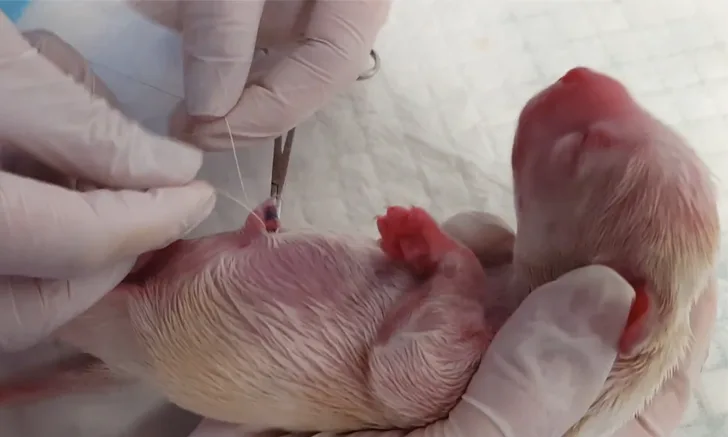
In the Literature
Adams DJ, Ellerbrock RE, Wallace ML, Schmiedt CW, Sutherland BJ, Grimes JA. Risk factors for neonatal mortality prior to hospital discharge in brachycephalic and nonbrachycephalic dogs undergoing cesarean section. Vet Surg. 2022;51(7):1052-1060. doi:10.1111/vsu.13868
The Research …
Neonatal mortality rate following cesarean section in dogs is 2% to 8%, with some studies reporting brachycephalic breeds are at higher risk.1,2 Additional risk factors include increased anesthesia time, obstructive dystocia, emergency cesarean section, and increased dam age.3 It is therefore important to improve methods for neonatal survival following cesarean section.3
This study sought to compare the neonatal survival to discharge rate between brachycephalic and nonbrachycephalic dogs and to determine whether different risk factors are associated with brachycephalic dogs undergoing cesarean section as compared with nonbrachycephalic dogs. All dams were induced with propofol or alfaxalone and maintained on inhalant gas anesthesia, and most neonates were delivered within 30 minutes of induction. Overall neonatal survival was 93.1%, and puppies delivered via elective cesarean section had higher survival rates than those delivered via emergency cesarean section. Brachycephaly had no effect on neonatal survival.
Study results indicate the most significant negative prognostic indicator for neonatal survival following cesarean section is the need for emergency cesarean section. Educating owners about elective cesarean section is thus critical for dogs at risk for dystocia, as performing this procedure as an elective surgery has been associated with improved neonatal survival.
… The Takeaways
Key pearls to put into practice:
Owners with dogs at risk for dystocia (eg, brachycephalic breeds, dogs with abnormal pelvic conformation) should be educated about the increased risk for neonatal mortality associated with emergency cesarean section as compared with elective cesarean section. Emergency cesarean section may also be significantly more expensive.
Epidural anesthesia can be used to decrease the amount of induction agents, opioids, and inhalant anesthesia needed during cesarean section and may result in more vigorous neonates. Induction can be performed in the operating room if the abdomen has already been clipped, thus decreasing time from induction to delivery. Preoxygenation of the dam should occur for at least 5 minutes prior to induction of anesthesia to decrease maternal and fetal hypoxemia.
A recovery team should be present following delivery to resuscitate neonates, provide warming and oxygen, suction nares, and ligate umbilical cords so the surgeon can focus on efficient delivery of each puppy.
You are reading 2-Minute Takeaways, a research summary resource presented by Clinician’s Brief. Clinician’s Brief does not conduct primary research.